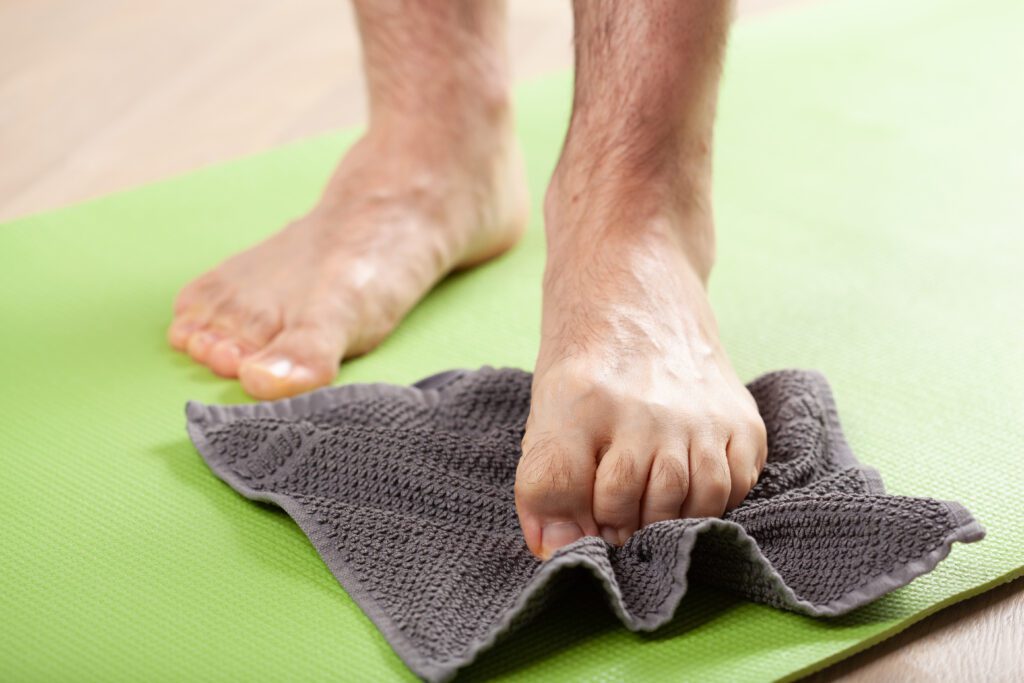Plantar fasciitis, a common and often debilitating condition, can turn every step into agony. Characterised by heel pain and discomfort, it can significantly impact your daily life and activities. The good news is that plantar fasciitis is often preventable with the right care and lifestyle choices. In this blog post, we’ll explore the top tips to help you avoid the development of plantar fasciitis and maintain healthy, pain-free feet.
Understanding Plantar Fasciitis
Before we delve into prevention strategies, let’s briefly understand what plantar fasciitis is and how it occurs. Plantar fasciitis is the inflammation of the plantar fascia, a thick band of tissue that runs along the bottom of your foot, connecting the heel bone to the toes. This ligament-like structure plays a crucial role in supporting the arch of your foot and absorbing shock during walking and running.
Plantar fasciitis usually develops due to overuse or repetitive stress on the plantar fascia, leading to small tears and inflammation. This results in sharp, stabbing pain, often concentrated in the heel or arch of the foot.
Now, let’s explore the top tips to help you avoid this painful condition:
- Foot Health Feet are the most amazing structure. They affect how the forces run through out bodies, allowing ankles, knees and hips to function correctly. If you foot becomes weak, through overly supportive shoes or lack of activity. The whole lower body is affected.
- Foot strength One of the best ways to avoid Plantar Fasciitis is to ensure you foot stays strong. Walking round the house barefoot is a great way to start with this. When you walk barefoot, your foot can move and flex in the way it was designed to. This helps to strengthen the muscles involved in maintaining the arch.
- Wear simple shoes In our younger days, shoes were a simple affair, trainers were relatively flat and did little to support the foot. This meant the foot had to work to stabilise itself, ensuring your feet stayed strong. Modern shoes aim to support your arch, when you support the arch externally, the muscles don’t need to work so hard, so they get weaker and this can lead to problems such as Plantar Fasciitis. There is a big growth in barefoot shoes for general use, not just for running, used correctly these can be a great way to maintain a strong and healthy foot.
- Pelvis position counts You may have heard people say that their pelvis is tilted, either forwards or backwards. The muscles of the legs attach to the pelvis, so the position of this large area, is hugely important to lower body health. If your pelvis tips forward, you create a line of tension all down the backline of your legs. This can result in a tugging on the heel bone and many of the symptoms of Plantar Fasciitis. A strong core will help the pelvis to remain in a neutral position, helping to keep the lower body balanced. If you are a desk worker, using a stability cushion at work can really help with your core strength and therefore your pelvis position.
- Strengthen your feet There are some great, super simple ways to strengthen your feet. the most common exercise is the simple towel scrunch exercise.You simply take a towel and try to scrunch it up with your foot. This is similar to the picking up a pen with your toes exercise that used to be hugely popular. The benefit of the towel is that over time you can make the exercise harder. Muscles adapt through overload, so to continue to make strength gains, the exercise needs to get harder. By adding a weight onto the towel before you scrunch it, you can make the exercise harder and make additional strength gains.

If you try the above and are still struggling with your foot or heel pain we can take a look at assess you fully. Take a look at how we treat Plantar Fasciitis here.
For more information on Plantar Fasciitis, take a look at this NHS website.